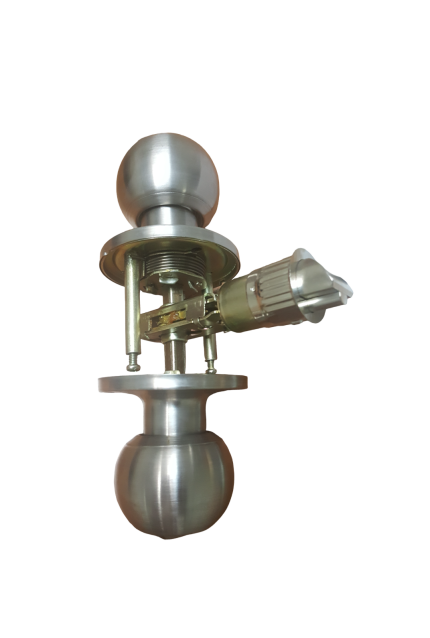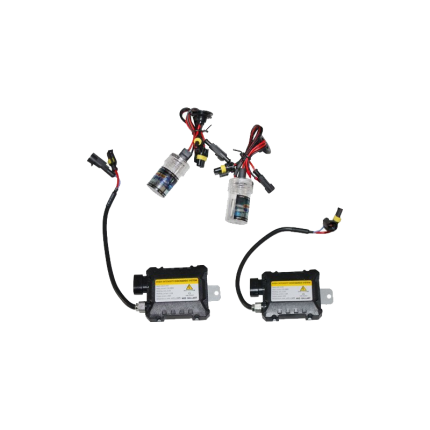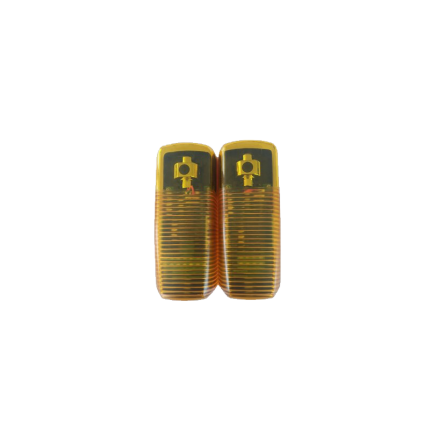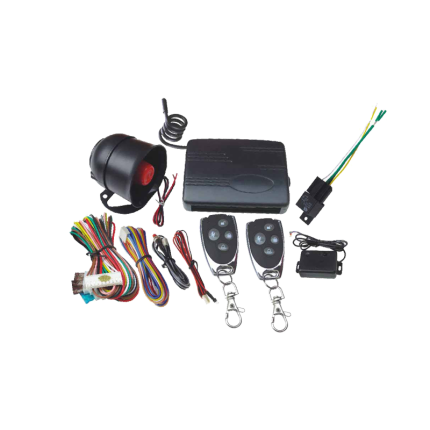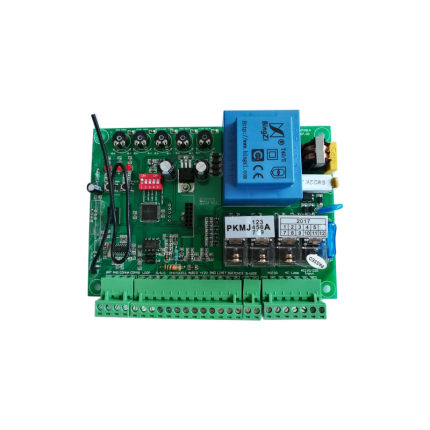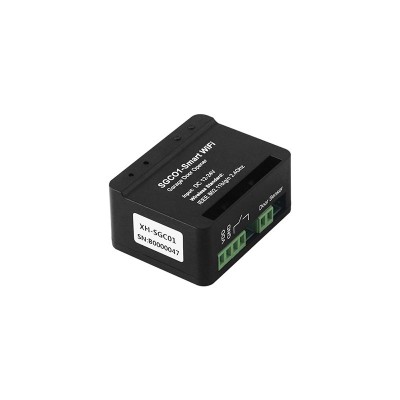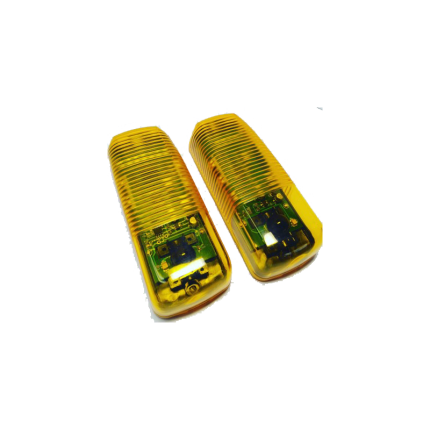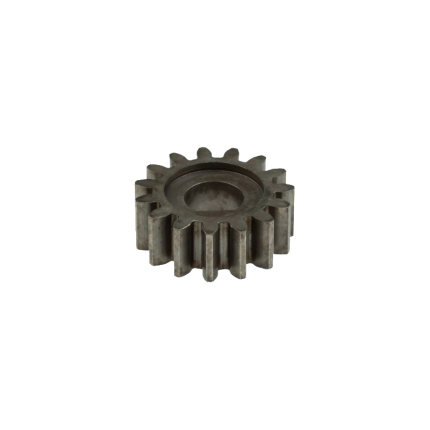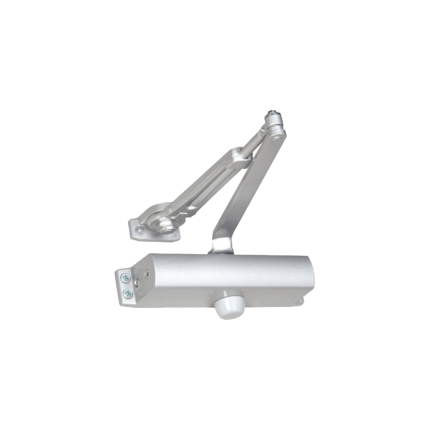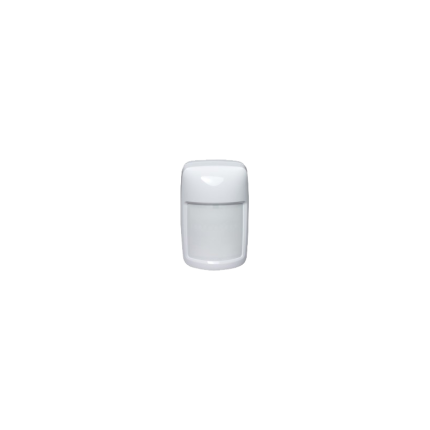Shop
Pedestrian gate manual lock (Two-sided key)
Ship or pick up from our office.
Pedestrian gate manual lock (Two-sided key)
A "pedestrian gate manual lock (two-sided key)" refers to a type of gate latch or lock that can be operated and secured with a key from both sides of the gate. Here's a breakdown of what that means and why it's useful:- Manual Lock: This indicates that the lock is operated by hand, typically by turning a key or a knob/lever, rather than being electric or automated.
- Two-Sided Key (or Keyed on Both Sides): This is the key feature. It means that there is a key cylinder on both the exterior and interior sides of the gate. This allows you to:
- Lock the gate from either the inside or the outside using a key.
- Unlock the gate from either the inside or the outside using a key.
- Convenience: You don't have to walk around the gate to unlock it if you're on the "wrong" side.
- Security: It provides a consistent level of security from both directions, preventing unauthorized access whether someone is trying to get in from the outside or out from the inside (if that's a concern).
- Accessibility: It can be crucial for pedestrian gates that serve as primary entry points, offering easy access for residents or authorized personnel from either side.
- Deadbolt Hook Locks: These use a hook-shaped bolt that engages with a strike plate on the gate post.
- Mortise Locks: These are installed within a pocket cut into the gate frame, offering a clean, flush appearance and good security.
- Rim Locks: These are surface-mounted on the gate, making them easier to install.
- Latches with an external access kit: Some general-purpose gate latches can be converted to be two-sided key-lockable with an additional kit.
Garden LED Light -Key Automation STIKFD
Ship or pick up from our office.
Garden LED Light -Key Automation STIKFD
PRODUCT SHEET PDF *Step lights, garage doors, and pergola lights *Completely made of aluminum *Power: 24-35 V/DC - 2W *Body color: Grey *LED color: 4400K/132lm *Length: 240 mm *Version: Flat *International Protection Rating: IP 54Vehicle HID light kit
Ship or pick up from our office.
Vehicle HID light kit
A vehicle HID (High-Intensity Discharge) light kit is an aftermarket product designed to convert a vehicle's standard halogen headlights to HID lighting. HID lights, also known as Xenon lights, produce light by igniting noble gases (like xenon) within a sealed bulb using an electric arc, rather than by heating a filament like traditional halogen bulbs. Components of a Typical HID Light Kit: A complete HID light kit generally consists of the following key components for each headlight:- HID Bulbs: These are the actual light sources. Unlike halogen bulbs, they don't have a filament. Instead, they contain xenon gas and metal salts. They come in various bulb sizes (e.g., H1, H7, 9006, D2S) to match the original halogen bulb fitment of a vehicle's headlight housing. They also come in different "color temperatures" measured in Kelvin (K), ranging from yellow-white (around 3000K-4300K) to pure white (5000K-6000K) and blue-white (8000K+).
- Ballasts (Igniters/Power Converters): This is the most crucial part of an HID kit. Halogen bulbs operate on 12V DC, but HID bulbs require a very high voltage (tens of thousands of volts) to ignite the gas and then a stable, lower voltage (around 85V AC) to keep the arc sustained. The ballast performs this function:
- Ignition: It provides the initial high-voltage pulse to ignite the xenon gas.
- Regulation: Once ignited, it regulates the current and voltage to the bulb to maintain a stable arc and optimal light output.
- Canbus Ballasts: Many modern vehicles use a "CAN bus" (Controller Area Network) system that monitors electrical circuits. If the vehicle detects a lower power draw from HID bulbs compared to original halogens, it might throw a "bulb out" error or cause flickering. "Canbus ballasts" are designed to mimic the electrical load of halogen bulbs to prevent these errors.
- Wiring Harness (Optional but Recommended): In some cases, particularly for vehicles with sensitive electrical systems or DRLs (Daytime Running Lights) that operate at reduced voltage, a relay wiring harness is used. This harness draws direct power from the battery, ensuring the ballasts receive consistent 12-14V, with the original headlight wiring acting only as a trigger.
- Capacitors/Resistors (Optional): These may be included or sold separately to address specific vehicle electrical issues like flickering (capacitors) or "bulb out" warnings (resistors), especially in vehicles with pulse width modulation (PWM) in their headlight circuits.
- Brightness (Lumen Output): HID lights are significantly brighter than standard halogen bulbs, offering more light output on the road.
- Color Temperature: Many users prefer the whiter or bluer light of HIDs, which often looks more modern and can improve visibility of road signs.
- Energy Efficiency: While brighter, HIDs can sometimes be more energy-efficient than halogens for the amount of light they produce.
- Lifespan: HID bulbs generally have a longer lifespan than halogen bulbs, though ballasts can fail.
- Glare and Light Distribution: Halogen headlight housings (reflectors or projectors) are precisely engineered to work with the light-emitting point and light distribution pattern of a halogen filament. When an HID bulb (which has a different light source and emits light differently) is placed in a housing designed for halogen, it creates an uncontrolled and often excessive amount of glare. This can blind oncoming drivers, creating a significant safety hazard.
- BC Motor Vehicle Act Regulations (Section 4.02 & 4.04): These regulations generally state that vehicle lamps must comply with original manufacturer specifications and approved standards (like SAE) and must not cause undue glare or dazzle oncoming traffic. Specifically, if a headlight housing is marked for a Halogen (HR) bulb, it is unlawful to put an HID (HG) light source in it.
- DOT/SAE Compliance: Aftermarket HID conversion kits typically do not meet DOT (Department of Transportation) or SAE (Society of Automotive Engineers) standards for the entire headlight assembly when installed in a halogen housing. Only complete headlight assemblies that are factory-designed for HIDs and meet these standards are truly legal.
- Enforcement in BC/Canada: While enforcement can vary, police in BC and across Canada can issue tickets (e.g., a $110 fine under the Highway Traffic Act) and potentially even order vehicles off the road for non-compliant lighting that causes excessive glare. They often look for vehicles with "uncontrolled" light output, especially if it's causing complaints.
- Best Practice: Projector Retrofits: To legally and safely upgrade to HID lighting, the proper method is a "retrofit." This involves replacing the entire headlight housing (or at least the internal projector lens assembly) with one specifically designed for HID bulbs. This ensures the light is properly focused and distributed, preventing glare. However, this is a more complex and expensive process than simply installing a "kit."
Safety sensor P51022H
Ship or pick up from our office.
Safety sensor P51022H
*NO/NC *AC/DC 12-24 V *Receiving Range: 12 Meters *IP 54 *External LED flash lamp signal (AC/DC 12V-24 V) *Internal Rotation system: 0~180 The P51022H is a safety sensor, specifically a photoelectric sensor, commonly used in automated gate and garage door opener systems. Functionality Like most photoelectric safety sensors, the P51022H works by:- Transmitting an infrared light beam: One part of the sensor (the emitter) sends out an invisible light beam.
- Receiving the beam: The other part of the sensor (the receiver) is designed to detect this beam.
- Obstruction detection: If something breaks the infrared beam while the gate or door is closing, the receiver instantly signals the opener to stop or reverse its movement. This prevents the door or gate from closing on people, pets, or objects, thus enhancing safety and preventing damage.
- Automated gate openers: For both single swing and sliding gates, ensuring they don't close on anything in their path.
- Garage door openers: A mandatory safety feature in most modern residential garage doors, preventing accidents.
- Type: Photoelectric sensor (often referred to as "photo eyes" or "safety beams").
- Components: Typically comes as a kit including a sending sensor (emitter) and a receiving sensor.
- Installation Height: These sensors are usually installed a few inches (e.g., 6 inches) above the ground to effectively detect obstacles, including small children or pets.
- Voltage: Similar sensors often operate on 12-24V AC/DC.
Car alarm system
Ship or pick up from our office.
Car alarm system
A car alarm system is an electronic device installed in a vehicle primarily to deter theft of the vehicle itself or its contents. It works by emitting a high-volume sound (often a siren, the car's horn, or a combination) and sometimes flashing the vehicle's lights when conditions for triggering it are met, alerting the owner and potentially scaring off thieves. How Car Alarm Systems Work: Car alarms generally consist of three main components working together:- Control Unit (Brain): This is the central processing unit of the alarm system. It receives signals from various sensors, processes them, and, if it detects unauthorized activity, triggers the alarm. It's essentially the "computer" that manages all the system's functions.
- Sensors: These are the "eyes and ears" of the alarm, constantly monitoring the vehicle for signs of intrusion or tampering. Common types of sensors include:
- Door/Trunk/Hood Sensors: These detect when a door, trunk, or hood is opened without authorization. They often work by detecting a change in an electrical circuit, similar to how your dome light turns on when a door is opened.
- Shock Sensors: These detect impacts or vibrations to the vehicle. A gentle bump might trigger a warning chirp, while a harder impact (like a window breaking or someone trying to tow the car) will trigger the full alarm.
- Glass Break Sensors: These specifically listen for the distinctive sound frequency of breaking glass.
- Motion/Proximity Sensors: These detect movement inside or outside the vehicle, often used in convertibles or vehicles with open interiors.
- Tilt Sensors: These detect if the vehicle is being tilted or lifted, such as during a towing attempt or when someone tries to jack up the car to steal wheels.
- Siren/Horn: This is the audible output of the alarm system. When triggered by the control unit, it emits a loud, piercing sound to draw attention and scare away intruders. Aftermarket sirens are often louder than a vehicle's factory horn.
- OEM (Factory-Installed) vs. Aftermarket:
- OEM alarms are built into the vehicle at the factory and typically offer basic features like monitoring doors, trunk, and ignition for unauthorized entry.
- Aftermarket alarms are installed after the car is built and can offer a much wider range of features, sensors, and customization options.
- Active vs. Passive Systems:
- Active alarms require the user to manually arm and disarm them (e.g., by pressing a button on a key fob).
- Passive alarms automatically arm themselves under certain conditions, such as when the car is locked, the engine is turned off, or the key fob moves out of range.
- One-Way vs. Two-Way Remotes:
- One-way remotes send commands to the car (lock, unlock, arm alarm) but don't receive feedback.
- Two-way remotes can send commands and also receive confirmation or alerts from the vehicle (e.g., "alarm triggered," "doors locked"). Some even have LCD screens displaying vehicle status.
- Integration with Other Security Features:
- Remote Start: Many modern alarm systems integrate with remote start functionality, allowing you to start your car from a distance while keeping it secure.
- Immobilizers: While distinct from alarms, many advanced security systems incorporate immobilizers, which prevent the engine from starting without the correct key or transponder, making hot-wiring virtually impossible.
- GPS Tracking: Some high-end systems include GPS tracking, allowing you to locate your vehicle in real-time if it's stolen and send alerts to your smartphone.
- Smartphone Integration: Many systems offer mobile apps that allow you to arm/disarm the alarm, check vehicle status, and receive alerts directly on your phone.
- Kill Switches: These can disable specific electrical circuits, making it difficult for a thief to start the engine.
Universal sliding gate operator control board SLRG24
Ship or pick up from our office.
Universal sliding gate operator control board SLRG24
The Universal Sliding Gate Operator Control Board SLRG24 is the "brain" of an automatic sliding gate system. It's designed to be a versatile replacement or core component for various DC-powered sliding gate operators, meaning it can control a wide range of motors and integrate with different accessories. Here's a detailed look at its features and significance: Core Function of a Control Board: The control board is the central electronic unit that:- Receives Signals: Interprets commands from remote controls, keypads, safety sensors (photocells, shock sensors, loop detectors), intercom systems, and other access control devices.
- Processes Logic: Decides what action the gate should take based on the received signals and its programmed settings (e.g., open fully, partially open for pedestrian, close, stop, reverse due to obstruction).
- Activates Motor: Sends the appropriate electrical signals to the gate motor to start, stop, or reverse its movement.
- Manages Accessories: Controls the power and operation of connected safety and convenience accessories like flashing lights, electric locks, and alarm outputs.
- Universal Compatibility: This is its defining characteristic.
- DC Motor Compatibility: It's designed to work with both DC 12V and DC 24V motors. This flexibility is crucial as many sliding gate operators use one of these DC voltages. It's important to note that it is NOT compatible with AC (Alternating Current) motors (like 110V or 220V AC motors).
- Limit Switch Flexibility: It can work with both spring-type mechanical limit switches and magnetic limit switches. This is a significant advantage for a universal board, as it means it can be used with a wider range of existing gate operators.
- Input Power: The board itself typically requires an AC 24V input power. This means it likely has an internal transformer or is designed to be powered by an external AC 24V transformer.
- Full Programmability: Offers a wide range of adjustable parameters, allowing customization of gate operation to suit specific needs:
- Gate Speed: Adjustment of how fast the gate opens and closes.
- Opening/Closing Times: Setting precise durations for gate cycles.
- Automatic Closing Time: Programming a delay before the gate automatically closes after opening (e.g., 15, 30, 45 seconds, or up to 3 minutes).
- Safety Settings: Integration and management of safety sensors (photocells, obstacle detection sensitivity).
- Pedestrian Mode: Ability to set a partial opening for pedestrian access.
- Party Mode: Often allows for temporary cancellation of auto-close for periods when many visitors are expected.
- Remote Control Capability:
- Features an integrated radio receiver, typically operating at 433.92MHz with rolling code technology. Rolling code prevents unauthorized cloning of remote controls, enhancing security.
- Supports multiple remote controls (e.g., up to 20 or more), making it suitable for larger families or multi-user environments.
- Accessory Output Power: Provides DC 24V accessory output power (e.g., 200mA max) to power various external devices:
- Safety Sensors (Photocells): Connects to and powers safety beams.
- Warning Flash Lights: Powers a flashing beacon that activates when the gate is in motion.
- Keypads/Intercom Systems: Provides power and input connections for wired access control devices.
- Electric Locks: Can manage the operation of an electric lock for added security.
- Safety Mechanisms:
- Obstacle Detection: Uses current sensing or other methods to detect if the gate encounters an obstruction during movement. Upon detection, it will typically stop or reverse the gate for safety.
- Automatic Stop Function: Ensures the gate stops precisely at its programmed limits.
- Short Circuit Protection: Often includes protection for output circuits (e.g., lock output) to prevent damage from wiring faults.
- Solar System Input: The mention of "Input Solar system" suggests it's designed to be compatible with or directly connect to solar charging systems for off-grid gate installations, making it suitable for rural properties or areas without easy access to AC power.
- Installation and Durability:
- Designed for relatively easy installation.
- Built with robust components for long-lasting performance in various weather conditions, though it usually requires housing in a waterproof box (often included in a kit).
- Features an automatic power-off memory function, retaining settings after a power outage.
- Replacing a Faulty Board: If an existing 12V or 24V DC sliding gate operator has a non-functional control board, the SLRG24 could be a suitable and cost-effective replacement, reducing the need to replace the entire gate motor.
- New Custom Gate Systems: It provides a flexible "brain" for custom-built sliding gate systems where the motor and other components are chosen separately.
- Solar-Powered Gates: Its solar input capability is a definite advantage for properties in Surrey or surrounding areas that might prefer or require solar power for their gate.
Safety sensor – P51033H
Ship or pick up from our office.
Safety sensor - P51033H
*NO/NC *AC/DC 12-24 V *Receiving Range: 12 Meters *IP 54 *External LED flash lamp signal (AC/DC 12V-24 V) *The P51033H safety sensor included the LED flash light The P51033H is a safety sensor, specifically a photoelectric sensor (also known as a photo eye) commonly used in automatic gate and door systems. What it Does 🚧 This sensor functions as an obstruction detection device. It consists of two parts: an emitter and a receiver. The emitter sends out an infrared light beam, and the receiver detects it. If an object (like a person, pet, or vehicle) interrupts this beam, the sensor sends a signal to the gate or door's control board, causing it to stop or reverse its movement, preventing potential injury or damage. Key Specifications ⚙️ Here are some of the technical details for the P51033H:- Working Voltage: 12~24VAC/DC
- Working Current (24VDC):
- Emitter:
- Receiver:
- Photocell Wavelength: (infrared)
- Angle of Opposite Emission:
- Receiver Range: (this range can be reduced by about in adverse weather conditions like fog, rain, or dust)
- Working Temperature:
- Relay Contact Loading Capacity:
- Waterproof Grade: IP54
- Size:
- Outputs: NO/NC (Normally Open/Normally Closed) contacts
- Height: More than above the ground to prevent false reflections.
- Distance between Emitter and Receiver: More than meters to ensure proper operation.
- Sunlight: The receiver should be installed away from direct sunlight or other strong light sources () to maintain stable operation.
- Multiple Sensors: If multiple photocells are installed on the same line, receivers can be placed at both ends and emitters in the middle, back-to-back, to prevent interference.
- Firm Installation: Install the photocell firmly to avoid signal bias between the emitter and receiver, which could lead to malfunctions.
Sliding gate operator gear
Ship or pick up from our office.
Sliding gate operator gear
The sliding gate operator gear is a crucial component within an automatic sliding gate system. It's essentially the mechanism that translates the rotational power from the electric motor into the linear motion needed to open and close a sliding gate. Here's how it generally works:- Pinion Gear: Inside the gate operator's housing, there's a pinion gear. This is a small, typically round gear directly connected to the motor. When the motor turns, it rotates the pinion gear.
- Rack Gear: Attached to the bottom edge of the sliding gate itself is a rack gear. This is a long, straight bar with teeth that mesh with the teeth of the pinion gear.
- Translating Motion: As the motor spins the pinion gear, its teeth engage with the teeth on the rack gear. This engagement causes the rack gear (and thus the entire gate) to move horizontally along its track. It's similar to how a train moves along a toothed railway or a car's steering rack works.
Keypad KO05SC107
Ship or pick up from our office.
Keypad KO05SC107
*Waterproof Keypad Version *EM/ID card/tag reader *Backlight Keypad *1000 Users *DC 12 V *Rain Shield Cover included in the keypad package The Keypad KO05SC107 is a standalone RFID access control keypad that is used to restrict entry to authorized individuals by requiring them to enter a specific code or PIN, or use an RFID card. 🔑 It's manufactured by Royal Electronics Technology Center Co. and is suitable for indoor use, although a rain shield cover is often included. Key Features & Specifications The KO05SC107 offers a range of features designed for security and convenience:- Access Methods: Users can gain entry by entering a PIN, using an RFID card, or a combination of both (card + PIN).
- User Capacity: It can store up to 1000 users, making it suitable for various settings like residential buildings, commercial properties, and industrial facilities.
- Card Reader Mode: It functions as an RFID card reader, and the transmission format can be adjusted by the user.
- Customization: Access can be customized for specific times or individuals, providing enhanced control.
- Integration: It can be integrated with other security systems such as intercoms, video surveillance, and alarm systems.
- Dimensions: The keypad has dimensions of 16 × 11 × 11 cm and weighs 0.4 kg.
- Durability: Some versions are waterproof.
- Residential homes
- Commercial offices
- Industrial facilities
- Any entry point where controlled access is needed, such as gates or doors.
Door closer -DCL062
Ship or pick up from our office.
Door closer -DCL062
Capacity: 75 Kg The "DCL062" appears to be a model number for a door closer manufactured by Royal Electronics Technology Center Co. A door closer is a mechanical device that automatically closes a door after it has been opened. Its primary functions include:- Controlled Closing: Regulates the speed and force of the door's closing action, preventing slamming and potential damage.
- Enhanced Security: Ensures doors are properly closed and latched, improving security by preventing unauthorized entry.
- Fire Safety: Crucial for fire doors, as it ensures the door closes completely to prevent the spread of fire and smoke.
- Accessibility: Some models are designed to meet ADA requirements for opening force and closing speed.
- Energy Efficiency: Helps reduce drafts and air leakage by ensuring doors close properly.
- Adjustable Power Size: Allows for setting the closing force based on door weight and width.
- Adjustable Sweep/Speed and Latching: Controls how quickly the door closes and how forcefully it latches.
- Backcheck: Provides resistance to prevent the door from opening too quickly or violently.
- Mounting Options: Can be installed in various ways (regular arm, parallel arm, top jamb, concealed, floor spring).
- Certifications: Often tested and certified to standards like ANSI/BHMA, BS EN, or UL for performance and fire safety.
PIR Infrared Sensor – wired
Ship or pick up from our office.
PIR Infrared Sensor – wired
A PIR (Passive Infrared) sensor is an electronic sensor that detects infrared (IR) light radiating from objects within its field of view. It's called "passive" because it doesn't emit any energy itself; instead, it passively monitors the existing infrared radiation in its surroundings. All objects with a temperature above absolute zero emit some level of infrared radiation, and the hotter an object, the more radiation it emits. PIR sensors are particularly effective at detecting the infrared radiation emitted by warm bodies, such as humans and animals. How PIR Sensors Work At the core of a PIR sensor is a pyroelectric sensor, a material that generates an electrical charge when exposed to changes in infrared radiation. To detect motion, most PIR sensors use a dual-sensor design:- Dual Elements: The pyroelectric sensor is typically divided into two halves or elements, wired in a way that they cancel each other out when no motion is detected. This means that if both halves receive the same amount of IR radiation (e.g., from the ambient room temperature), their signals balance, and no output is generated.
- Fresnel Lens: A Fresnel lens is often placed in front of the pyroelectric sensor. This special lens has multiple facets that help to focus infrared light from different angles onto the sensor elements, increasing its range and sensitivity, and creating distinct detection zones.
- Motion Detection: When a warm object, like a person, moves across the sensor's field of view, it first enters one detection zone (and thus one half of the pyroelectric sensor) and then the other. This causes a differential change in the amount of infrared radiation impinging on each half of the sensor. This difference in IR energy between the two halves creates an electrical signal.
- Signal Processing: The sensor's internal circuitry processes this change in voltage. If the change is significant enough (indicating a "moving heat source"), the sensor triggers an output signal.
- Security Systems: The PIR infrared sensor are a fundamental component of burglar alarms and motion-activated security cameras, detecting intruders by their body heat.
- Automatic Lighting: PIR infrared sensors are used in homes, offices, and public spaces to automatically turn lights on when someone enters a room or area and off when it's unoccupied, leading to energy savings.
- Smart Home Automation: The PIR infrared sensor play a crucial role in smart homes, triggering various automated actions like adjusting thermostats, turning on appliances, or opening doors based on occupancy.
- Automatic Doors: Many automatic door systems, like those found in shopping malls, use PIR sensors to detect approaching individuals and open the doors.
- Industrial Monitoring: They can be used to monitor machinery movement or detect the presence of personnel in hazardous areas for safety purposes.
- Wildlife Tracking and Research: Researchers use them to monitor animal movements unobtrusively.

